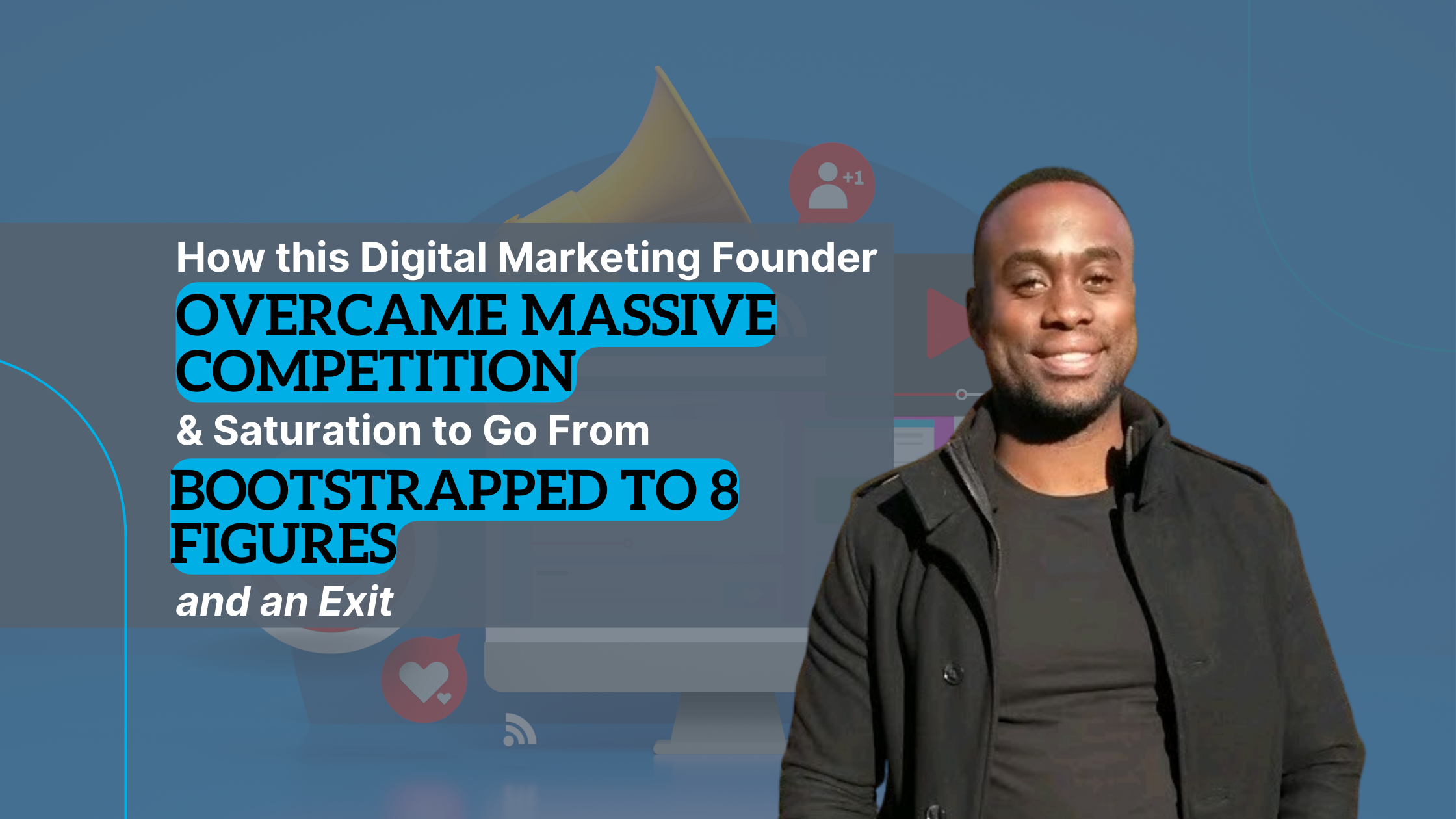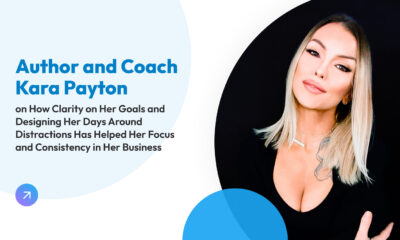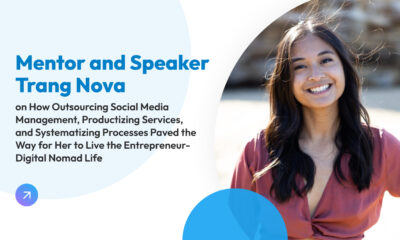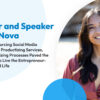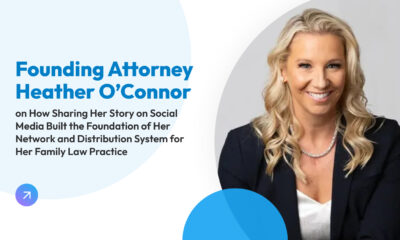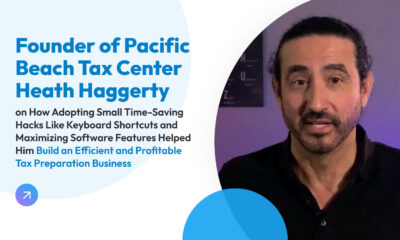Case Study
How this Digital Marketing Founder Overcame Massive Competition & Saturation to Go From Bootstrapped to 8 Figures and an Exit
Bootstrapping a digital marketing company is already no easy feat but what happens when it’s almost put out of business completely by Google (yes, that Google)? In this article, we’re talking to Nii A. Ahene, who co-founded CPC Strategy in 2007 and later sold it to Tinuiti in 2018, about how he turned near-certain doom into booming business and the people, systems, and tools he leveraged to get to where he is today. Don’t forget to check out the end with a summary of Ahene’s Productivity Stack Quick Reference and his Reading List!
Table of Contents
- Starting out
- Challenge 1: Time management – How to start a business while working a full-time day job
- Challenge 2: Bootstrapped Budget – How to start a business without an investment
- Challenge 3: Strategy – How to grow a business and not just execute their primary skill
- Challenge 4: Distribution – How to get clients in a very narrow niche
- Growing
- Challenge 5: Client Work Overload – How to manage time when there’s too much client work
- Challenge 6: First Hires – How to hire and train someone without industry or job knowledge
- Challenge 7: Sales Team – How to hire & train sales people when the hiring system doesn’t work for sales
- Challenge 8: Google as Competition – What to do when a major company enters the stage
- Challenge 9: Saturated Industry – What happens when your niche goes from narrow to saturated
- Scaling & Success
- Hindsight: What Ahene would have done differently.
- Wrap Up
- Ahene’s Reading List
- Ahene’s Productivity Stack Quick Reference
- More about Nii. A. Ahene
Starting out
Challenge 1: Time management – How to start a business while working a full-time day job
Ahene recalls one of his first challenges as a co-founder was managing his time between his full-time day job at eBay while starting his company and juggling trying to sell to customers and also provide the services required to those clients.
Solution: Ahene found the solution in a smart (and efficient) division of labor with his co-founder, Rick Backus, whose skill set greatly differed from his own. Backus was far more of a salesperson while Ahene excelled in all things technical. Ahene broke it down for us: “During the daytime, [Backus] would have conversations with clients, pitch new clients and build the general strategies. Once I was done with my job at eBay, we would use my 45-minute commute as a phone meeting where I would determine what technical pieces needed to be done and spend about 2 to 3 hours that evening executing it all.” Ahene explains he and Backus did this for about a year. The division of labor worked in the beginning, but they ended up taking on two additional co-founders for a total of four. Ahene feels that having four co-founders really helped them manage to create sustainable growth in the early days because of not just the skills of each of the founders but the combined time that was able to be invested.
People: Multiple co-founders (total of 4)
System: Clear division of labor from the beginning across founders and clear time blocks to work around everyone’s obligations and schedules.
Tools: Paper to-do lists in simple notebooks like Moleskine
Challenge 2: Bootstrapped Budget – How to start a business without an investment
When you start a company without an investment (bootstrapped), it can be difficult to come up with enough money to support, in this case, four co-founders when the business has only just begun.
Solution: Aggressive savings & low expenses. Ahene and his co-founders started their business during the 2007 recession so they lived on their personal savings and cut expenses to the extreme with diets composed of Cup Noodles and Costco roasted chicken. Approximately a year after starting out, they did bump their pay from zero to a whopping $12,000 each.
People: Still 4 co-founders. Ahene did the bookkeeping until 2014 but an outside CPA was hired for annual taxes.
Systems: Founders had good financial management systems in place allowing them to have personal savings to live on and reduce their budgets to live on very little. Ahene also attributes the extreme personal budget cutting to youth in that the founders were all in their early twenties at the time.
Tools: Quickbooks used “religiously”
Challenge 3: Strategy – How to grow a business and not just execute their primary skill
The founders knew comparison shopping, which was the service they were providing very well but none of the founders had any business experience nor a business degree so operating and growing a business was certainly not innate for any of them.
Solution: Ahene and his founders read business books usually while sitting in the bookstore because they couldn’t afford to buy them and many weren’t available in libraries. Ahene reminisced about days spent at Barnes & Noble and Borders reading as many business books as possible and trying to learn everything from accounting to sales processes, contracts, and more. “YouTube wasn’t what it is today and you couldn’t necessarily go and take a course back then,” he remembers. Ahene said they did invest in a few key books that often came with frameworks and action items.
People: All 4 founders
Systems: Reading the books at the bookstore because libraries didn’t have all of the ones they needed and they couldn’t always afford to buy them. Leveraged the frameworks from the books & created interactive worksheets for the company to implement.
Tools: Some key books they did purchase were Predictable Revenue, The Sales Acceleration Formula, The Challenger Sale, The Ultimate Sales Machine
Challenge 4: Distribution – How to get clients in a very narrow niche
At the time, while it’s hard to imagine, comparison shopping (and then later, comparison shopping for e-commerce) was actually a very tiny niche. Furthermore, within that niche, companies did not have massive budgets. “Most companies at that time allocated about 5% of their digital marketing budgets to the service we provided,” Ahene explains. This meant that if Ahene and his co-founders were going to be successful, they really needed nearly everyone who could be a prospective client to know about their company, like them, and trust them.
Solution: Ahene and his cofounders tried tactics ranging from cold calling to doing in-depth reviews of their target customers’ strategies but he says while the latter “was somewhat successful, it was very time-intensive and just not scalable.” But the last strategy did contribute to the real solution to this challenge, content.
“Over the long term, we saw that the more we invested in content, talked about best practices, and helped businesses navigate and figure out how to stand out in online comparison shopping, the more people started to reach out unprompted and ask for our services.” But that wasn’t even the real turning point for this challenge, it was actually a ranking system CPC Strategy started publishing every quarter that Ahene says solidified them in people’s minds as an authority in the industry but it took a bit longer for content to become nearly the only strategy that the company would focus on to grow.
Ahene says there was a turning point in 2010. “We were still cold calling, but when we did cold calls, people would actually recognize who we were because they’d already read one or more articles that had helped them so that meant the calls went better, too, but it was all because of the content we were producing.”
People: Nii & one other co-founder wrote the articles
Systems: Committed to consistently put out about two articles a week and sometimes more when there was breaking news in the industry. Also put out quarterly ranking.
Tools: WordPress, Microsoft Excel (to create the quarterly rankings of the comparison shopping engine websites), Demand Metric (to get SOPs, Templates & Frameworks for Marketing)
Growing
Challenge 5: Client Work Overload – How to manage time when there’s too much client work
“We went from 5 to 10 clients to now 20, 30, and growing and the four of us weren’t enough to talk to our clients about their campaigns and their strategies so it became clear we needed to bring other team members on to be able to grow the business faster,” Ahene explains. At this stage, all of the founders were focused on supporting clients and none of them were spending time working on the business or on business strategy in any way.
Solution: The founders hit pause on growth strategy to the extent possible and decided to hire a recent graduate from a local university in San Diego, California where the company was based at the time. But this produced the next challenge we’ll talk about!
People: Hired 1 account manager.
Systems: Created clear onboarding checklists
Tools: Microsoft Excel, Google Docs, Google Calendar (for training curriculum), Camtasia (to record “how to” videos)
Challenge 6: First Hires – How to hire and train someone without industry or job knowledge
“We had never trained anybody and we were all just 2-3 years out of college ourselves,” Ahene reflects. “We didn’t necessarily know how difficult it was going to be to hire somebody new to the industry, train them up on what our processes were, and have them sit down and be an account manager with the authority to host client meetings and gain the respect of our clients.”
Solution: Fortunately, Ahene’s company had a recurring revenue business model so that meant that they did not need to land new clients every single month to maintain their current revenue and instead could now make their priority creating a hiring and training system.
They spent the next couple of years focusing on just that and developing good processes around this. They started by defining the “Account Manager” role. Fortunately, co-founder William Parris’s primary role was exactly that, so he’d already developed some of his own systems and processes around account management. All four co-founders came together to develop systems with one primary goal in mind: how they could divorce Parris completely from the role. They needed systems that made it possible for the Account Manger to obtain all of the information he or she needed, execute tasks on the account and interface with the client all without needing help from Parris. Once they were able to create those systems, they hired two additional account managers in 2010 and five in 2011.
People: 7 additional account managers
Systems: Fully systematized onboarding process: job score cards to define what success looks like 30, 60, & 90 days into a role. Clear definition of the role and functions.
Tools: Microsoft Excel, Google Docs, Google Calendar (for training curriculum), Camtasia (to record “how to” videos – switched to Loom eventually)
Challenge 7: Sales Team – How to hire & train sales people when the hiring system doesn’t work for sales
At this point, another time management problem came into play. Namely, Rick Backus, the CEO, was now spending most of his time selling and not really strategizing so it was time to separate the roles of CEO and salesperson. This time though, the account manager hiring system they built didn’t work to hire and train sales people. Ahene explains “the story we told was our own personal history.” In other words, the founders relied heavily on the fact that they themselves were industry insiders with a unique set of skills and knowledge – great when the founders were the ones in the room, but not something a newly minted sales person could leverage to build their own trust and credibility. So it was back to the drawing board to create a new system, this time to hire & set sales people up for success without needing to lean on the founders’ personal stories.
Solution: The first part of the solution was to double-down on their content strategy, this time to prove that the company, not just the founders, was a real authority made up of experts in the niche. In addition, CPC Strategy moved into doing audits of prospective client accounts thereby allowing salespeople to prove that the company could not just talk the talk, but truly walk the walk and execute on the published content they were pumping out. Because they were relying increasingly on audits, they’d also stumbled on an efficient solution to the hiring & training process by promoting account managers to the sales role since they were already very familiar with the work being done and could more easily carry out these audits. This eliminated the industry learning curve so the newly promoted team member could focus entirely on just learning the sales process.
People: Promoted 1 person from account manager so they already knew the execution of the service & to create and test the system before hiring more.
Systems: Focused on the sales onboarding piece only because knowledge of the service was a given. Used a similar system for this: Scorecards and clear definition of roles and functions.
Tools: Salesforce and join.me (now GoToMeeting) to go over the audits with prospects
Challenge 8: Google as Competition – What to do when a major company enters the stage
Google announced that they were entering CPC Strategy’s primary niche of comparison shopping and with that, Ahene knew his company was about to go from the only major player in his niche to the smallest player by far: “The initial reaction from our team was ‘oh shit, we’re fucked’. Because when Google is coming into your space it’s going to cause a ton of disruption.”
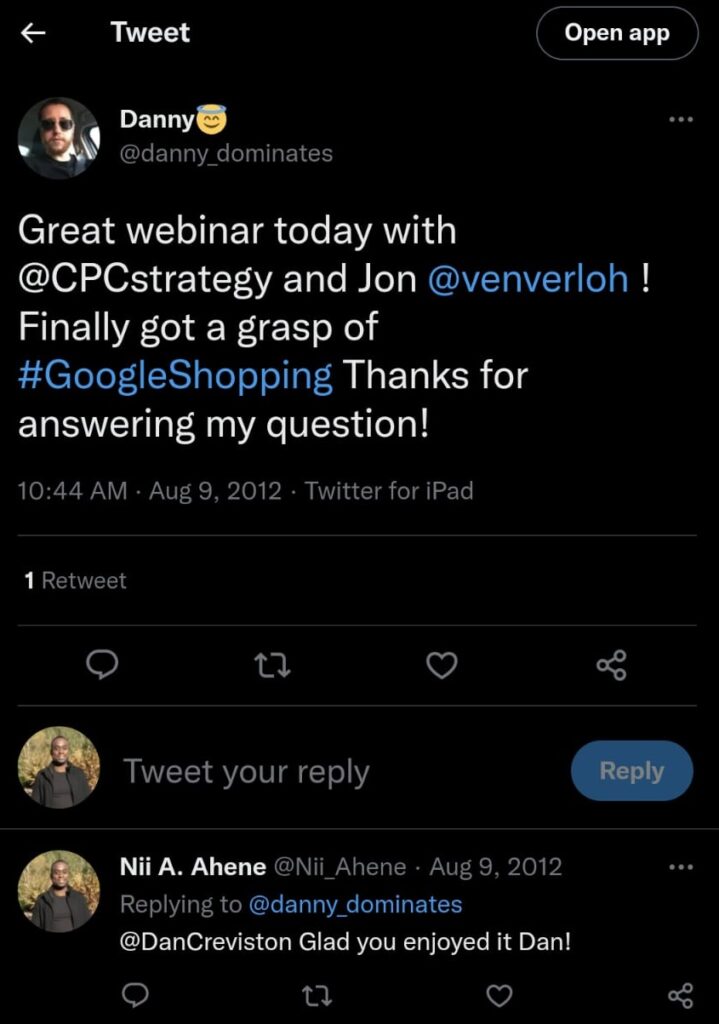
Solution: Instead of giving up, they decided to look at it as an opportunity. “Since Google is where people go to search, if [Google] is going to create the best possible search engine for products, there’s probably a good chance that there’s going to be a ton of opportunity for new brands and new companies to embrace the concept of comparison shopping,” Ahene explains. “Maybe 5% of people cared about comparison shopping but once Google entered the space, everybody had to think about comparison shopping.”
It’s important to note here that from the beginning, Ahene prioritized two things – growing an email list and establishing authority. As a result, the employees of major companies like Google and Amazon were on the CPC Strategy email list and actively consuming their content prior to this announcement. This is a great reminder to all of us that any current or future behemoth company is, in the end, made up of humans who are just trying to do a good job – and we might want them on our email list!
The knowledge that employees at these companies were already on their email list gave them the confidence to make a bold move. CPC Strategy reached out to Google directly and pitched the idea of a joint webinar. The result? Google not only accepted but asked Ahene and his team about the possibility of partnership. This ended up going from a serious problem to an amazing opportunity for CPC Strategy.
People: Leveraged their existing connection to the employees of major companies previously established through content marketing.
Systems: This was CPC Strategy’s first webinar ever and it spurred them on to do webinars in general. This first had about 500 people register (due to the fact no one was talking about the topic, and they already had an email list).
Tools: GoToWebinar (to give the actual webinar – switched to Zoom eventually), Marketo (marketing management)
Challenge 9: Saturated Industry – What happens when your niche goes from narrow to saturated
While Google’s entry meant nearly any brand that wanted to sell online had to think about comparison shopping, it meant practically everyone was thinking about comparison shopping. That means Ahene’s competitors also started to see the opportunity. While Ahene might have been first in the door, significant competition emerged quickly.
Solution: It was at this point that they saw the need to diversify their services into AdWords (text ads on Google) meaning that they would now offer each client a variety of marketing services – becoming a one-stop-shop. At this time, AdWords wasn’t very user-friendly so brands really needed a company like CPC Strategy to manage this for them. Ahene specifically credits the decision to have account managers assigned full-time to AdWords, instead of splitting a given person’s time between comparison shopping and AdWords, for the success of this new diversification.
People: Cross-trained comparison shopping account managers to AdWords (hired AdWords consultants to do the training).
Systems: Multiple account managers were full-time on AdWords. Account managers would either be doing comparison shopping or AdWords, but not both.
Tools: Basecamp (project/team management), AdWords Platform (now Google Ads)
Scaling & Success
Challenge 10: Finding a New North Star – How to avoid over-diversification
Now that CPC Strategy’s services were increasingly diversified, and sales were booming, they were faced with deciding who their new ideal clients would be. “Anyone who wanted comparison shopping” wouldn’t cut it anymore. Were they going to do internet marketing for everyone from doctors and lawyers, to nonprofits? “With that diversification, we had to ask where exactly do we have the right to win?” Ahene reflects.
Solution: Ahene thought back to how they answered that question: “We connected with two mentors who had more success in business than us through a local mastermind called the Chairman’s Roundtable and they helped us think about our mission and what we were trying to do. We were able to figure out where we were uniquely positioned to win, which was specifically around retail and e-commerce and that became our North Star as we grew the company.” At that time, e-commerce was nowhere near as booming as it is today and truly was quite a niche. When we asked Ahene about why, in the face of such booming growth the founders even stopped to ask these questions, Ahene remembers that it was the team members themselves who were conflicted about where things should be headed and asking questions that the founders didn’t have answers to…yet. It was clear that it was a crucial time to stop and realize the previous North Star was not specific enough and it was time to define a new clear vision that everyone could embody to move the business forward in the same direction.
People: Key internal employees who cared enough about the company to start posing the North Star question & two mentors from the Chairman’s Roundtable
Systems: Leveraged mentors from a Mastermind
Tools: Chairman’s Roundtable
Challenge 11: Offering Free Value – How to decide whether to offer free value when there is no clear money-making opportunity
Shortly after deciding on e-commerce as the new focus, Amazon began emerging as a growing, and then leading, e-commerce platform. Unfortunately, there were no options for PPC (pay-per-click) advertising directly on Amazon at that time, and PPC is how CPC Strategy was making money from their clients through their Google AdWords service. Ahene’s company was paid a percentage of the amount their clients were spending on Google in exchange for managing the advertising. Without a similar feature provided by Amazon, it wasn’t fully clear how money could be made. Since the entire business rested on content marketing as the overarching strategy, they had to decide whether to invest time, energy, and resources in covering Amazon, even though there was no real way for that to lead to a paid service as no paid service existed.
Solution: Ahene attributes a lot of his success to this crucial decision and says that it really wasn’t a difficult decision in the end because he and his team were laser-focused on one thing – creating clear value for their ideal customer avatar. Even though there was no clear way to directly tie the free value they were publishing to help brands sell on Amazon to a service offering the way they had in the past with comparison shopping & Google AdWords, they trusted that it would still continue to boost their authority as the go-to online marketing authority for e-commerce brands.
It turns out, that was a very good decision, because Ahene and his team successfully solidified themselves as THE Amazon authority…and then Amazon launched the ability to run PPC advertising. As a result, CPC Strategy was perfectly positioned and lightyears ahead of any possible emerging competitors when it came to being the leading authority on Amazon. Because the company was seen as an expert in PPC advertising for e-commerce in general and an expert in Amazon for e-commerce, they were untouchable as the go-to for Amazon PPC advertising.
People: Expanded content team to 2 full-time writers plus an editor/marketing director. Also developed a team of contract writers.
Systems: Writers interviewed the internal account management team to come up with content with questions like “What are your thoughts on this new feature?” or “If you have this or that type of client, what does it take to grow their revenue?”
Tools: WordPress, Ahrefs (SEO & keyword research), Google Sheets (for content calendar) – Basecamp (for writer and content management)
Hindsight: What Ahene would have done differently.
When asked about something he would have done differently or earlier, Ahene didn’t hesitate. “Facebook. The frustrating thing about Facebook for me looking back on it is that it’s not like we didn’t try. We tried multiple times to launch Facebook, but we didn’t invest enough in it.”
Ahene went on to explain that every time they diversified or pivoted and were successful, it was because they had truly invested by putting someone full-time on that piece, except when it came to the Facebook platform. “So if I could go back and do it again, I would’ve been a lot more aggressive about finding somebody who could help us jumpstart our Facebook capabilities earlier on.”
Wrap Up
Ahene’s challenges weaved in and out of time management of the founders, a challenge entrepreneurs know all too well, as well as real industry pressures turned into opportunities – a great reminder to all of us that sometimes what looks like a possible death blow, can actually be a huge catalyst to success. In the end, the team’s focus on providing relentless value regardless of always having a clear return on investment and a clear ideal client avatar at each stage so that they always know who they were providing value to, led to a very successful company and ultimately, a handsome exit.
Ahene and his co-founders sold their highly successful business to a company called Elite SEM in 2018 which, after purchasing multiple companies, formed a new and larger entity called Tinuiti where Ahene continues on as Chief Strategy Officer. The sale of his company along with the growth of a new entity and incorporation of new companies with their own cultures and goals held its own challenges which we look forward to covering in another article! If you liked this article, don’t forget to subscribe to our newsletter here so you don’t miss the next article drop and check out Ahene’s Reading List and Productivity Stack Quick Reference below.
Ahene’s Reading List
Ahene’s Productivity Stack Quick Reference
Starting Stack
- Paper to-do lists in simple notebooks like Moleskine
- Quickbooks used “religiously”
- WordPress for content marketing
- Microsoft Excel (to create the quarterly rankings of the comparison shopping engine websites)
- Demand Metric (to get SOPs, Templates & Frameworks for Marketing)
Growing Stack
- Google Docs
- Google Calendar (for training curriculum)
- Camtasia (to record how to videos to train and onboard team – switched to Loom eventually)
- Salesforce (for customer relationship management)
- join.me (now GoToMeeting – switched to Zoom eventually for meetings) to go over audits with prospects
- GoToWebinar (to give webinars – switched to Zoom eventually for webinars)
- Marketo (marketing management)
- Basecamp (project & team management)
- AdWords Platform (now Google Ads)
Scaling & Success Stack
- Chairman’s Roundtable mastermind (to meet mentors)
- Ahrefs (SEO & keyword research)
- Google Sheets (for content calendar)
- Basecamp (for writer and content management)
More about Nii. A. Ahene
You can find more information about Ahene and Tinuiti at Tinuiti.com


